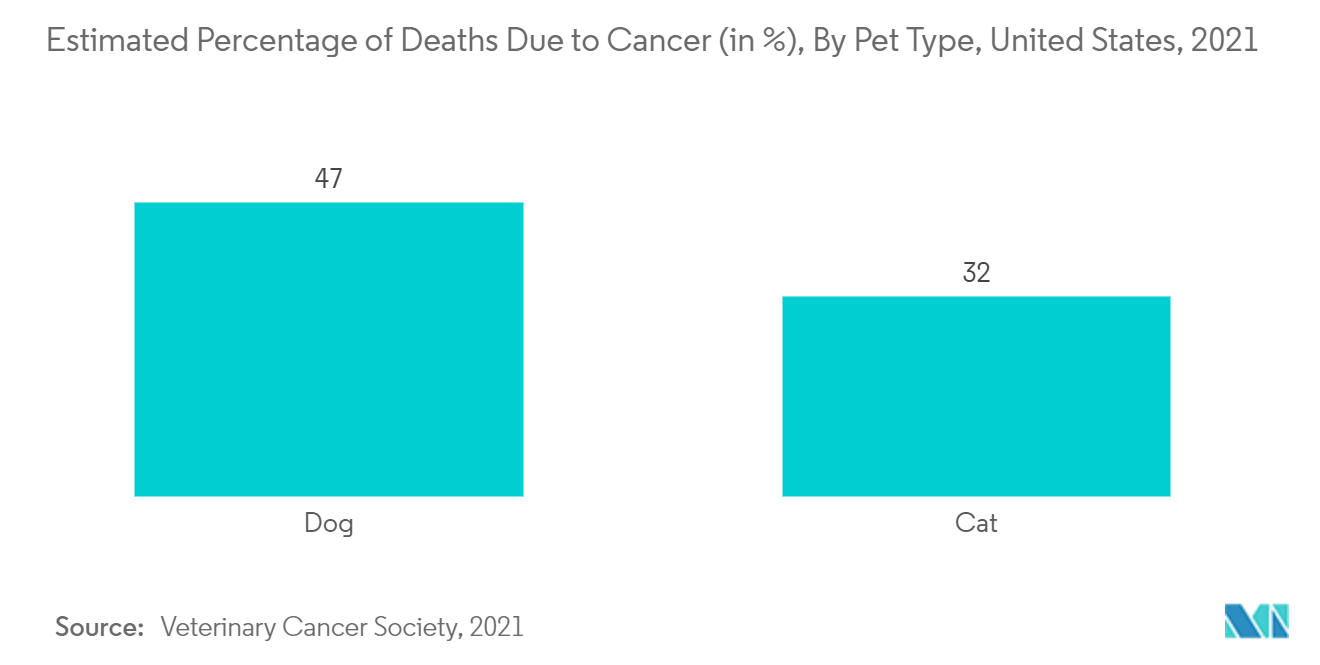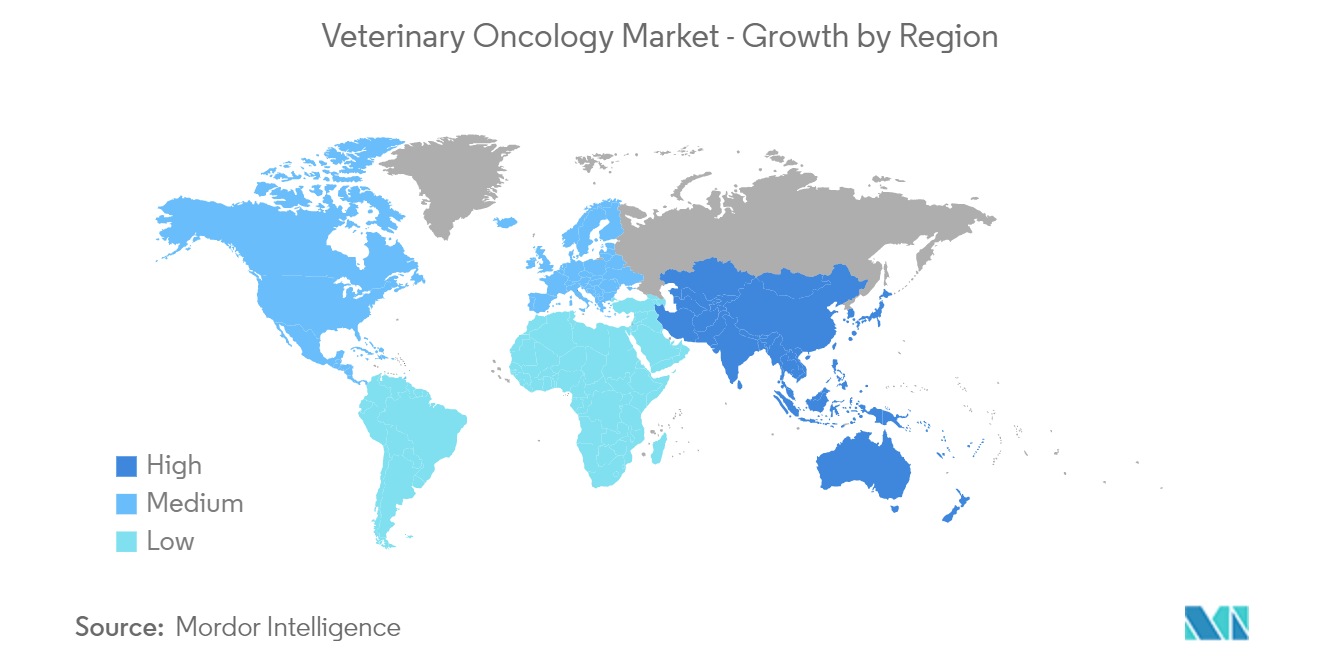Market Trends of Veterinary Oncology Industry
Canine Animal Type Segment is Expected to Hold a Significant Share in the Market Over the Forecast Period
- The canine animal segment is poised to dominate the veterinary oncology market, driven by the high incidence of cancer in canines, growing pet adoption rates, and longer lifespans of these animals, which increase the likelihood of cancer. As per a March 2021 Frontiers article, cancer is the leading cause of death in dogs, largely because many cases are diagnosed at advanced stages when the prognosis is unfavorable and clinical symptoms have emerged.
- Moreover, a June 2022 Frontiers article reported on a study in Mainland China, which found that canine mammary tumors were the most prevalent type of tumors in dogs, accounting for 46.71% of cases in the past five years, with 48.41% of the tumors being benign and 51.59% being malignant, and pure breeds accounting for 84.13% of cases. Therefore, the increasing incidence of tumors in dogs is anticipated to further drive growth in this segment.
- Additionally, the increasing number of product approvals and new therapeutics launches is expected to bolster the growth of the studied segment. For instance, in July 2021, the United States Food and Drug Administration (US FDA) authorized VetDC Inc.'s Tanovea to treat lymphoma in dogs. As a result, the factors mentioned above, such as the rising prevalence of cancer in dogs and the launch of new therapeutic options, are expected to boost the market growth.

North America is Expected to Hold a Significant Share of the Veterinary Oncology Market Over the Forecast Period
- The veterinary oncology market in the North American region has held a significant share over the years. It is expected to continue this trend during the forecast period of the study. This can be attributed to several factors, such as the large animal population, including pets, increasing cancer burden, the presence of better veterinary care and services, and rising veterinary healthcare expenditure in the region.
- According to data from the Canadian Animal Health Institute (CAHI) in September 2022, more than half of Canadian households (60%) own at least one dog or cat in 2022. Additionally, the dog population increased to 7.9 million, and the cat population increased to 8.5 million in the same year. With such a large animal population base, the burden of cancer among animals is expected to be higher, which is likely to drive the growth of the veterinary oncology market.
- In the North American region, the United States is expected to hold a significant share of the veterinary oncology market due to having one of the highest numbers of animals in the region, coupled with high animal health expenditure and a high burden of animal cancer cases. According to the 2021-2022 American Pet Product Association (APPA) National Pet Owners Survey, about 70% of households in the United States owned a pet, which translates to about 90.5 million homes. Cats and dogs were the major pets, with a total population of 45.3 million and 69 million, respectively.
- Furthermore, pet owners in the United States spent significantly on veterinary care. They spent about USD 458 for dogs and USD 201 for cats for surgical vet visits, and for routine vet visits, they spent USD 242 and USD 178 for dogs and cats, respectively. This indicates a significant presence of a large pet population in the country and high spending on their healthcare needs. With the growing burden of cancer in the country, research for cancer care for animals is increasing, which is expected to augment the growth of the veterinary oncology market. For instance, in November 2022, NCI-funded canine immunotherapy clinical trials were conducted.
- Considering all of these factors, the veterinary oncology market is expected to grow significantly during the forecast period of the study in the North American region.


